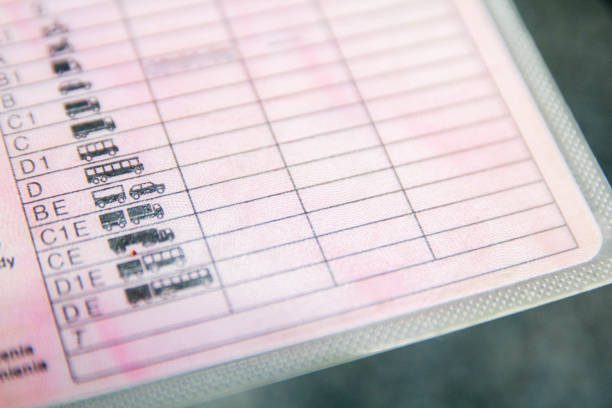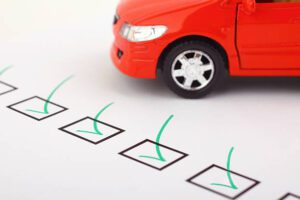Driving offers not only freedom but can also open doors to the job market or higher education institutions, such as colleges and universities. South Africa, like many other countries, has a growing demand for drivers, and to become one, understanding the different driver’s licence codes is essential.
In South Africa, driving licences are issued with specific codes, indicating which type of vehicle you are permitted to operate. Having a thorough understanding of these categories can help you choose the right licence for your needs.
The Four Major Categories of Driver’s Licences in South Africa
South African driving licences are grouped into four main categories, each with unique requirements and specific vehicle types associated with them. For instance, a Code A licence allows for the operation of motorcycles, whereas a Code B licence is needed to drive light motor vehicles. For those looking to operate heavy vehicles, a Code C licence is necessary, while Code D covers licences for transporting passengers and goods.
If you intend to transport fare-paying passengers or tourists for a fee, obtaining a Professional Driving Permit (PrDP) is mandatory.
This article explains the various types of driver’s licences in South Africa and which vehicles they allow you to operate.
Types of Driver’s Licences in South Africa
Since 1998, the South African licence system has utilized letter codes to differentiate between the various types of licences. Each letter corresponds to a specific vehicle type and driving eligibility.
Motorcycle Driver’s Licences (Code A)
Motorcycle licences in South Africa are categorized based on engine capacity. There are two types of motorcycle licences: Code A1 and Code A.
At the age of 16, you can legally start riding a motorcycle on South African public roads, provided you hold a learner’s licence. A learner’s licence permits you to ride a motorcycle with an engine capacity of up to 125 cubic centimetres (cc), and it remains valid for two years. However, with a learner’s licence, you are not allowed to carry a passenger.
“A learner’s licence is valid for two years, and you’re allowed to continue riding your motorcycle with your learner’s licence alone – that is, you’re not allowed to carry a passenger with just a learner’s licence.”
Let’s explore the two categories of motorcycle driver’s licences in detail:
How to Apply for a Drivers Licence in South Africa
Code A1 – Small Motorcycle Licence
This licence is applicable to motorcycles with or without a sidecar that have an engine capacity of 125cc or less. Examples include scooters and mopeds.
Code A – Motorcycle Licence
For motorcycles with engine capacities exceeding 125cc, a Code A licence is required. To apply for a learner’s licence for such a motorcycle, you must be at least 18 years old.
“A motorcycle learner’s licence does not permit you to carry a passenger, not even an instructor.”
Light Motor Vehicle Driver’s Licences (Code B)
The Code B driver’s licence, formerly known as Code 8, is one of the most common licences in South Africa. It allows individuals to operate any vehicle with a mass of up to 3,500 kg, excluding motorcycles and agricultural vehicles. To obtain a Code B licence, you must be 18 years or older and have a learner’s licence.
The Code B licence also covers the operation of tractors and mobile machinery. There are four subcategories under Code B:
Code B(a) – Light Motor Vehicles with a Small Trailer
This licence allows you to drive vehicles weighing up to 3,500 kg, including minibuses, buses, and goods vehicles. A trailer with a gross vehicle mass (GVM) of up to 750 kg can also be attached.
Code B(b) – Special Vehicles (Ambulances and Garbage Trucks)
With this licence, you can drive service vehicles such as ambulances and garbage trucks, provided their tare weight is no more than 3,500 kg.
Code B(5) – Tractors
This licence permits the operation of tractors, with no mass limit applied, whether or not the tractor is towing a trailer.
Code B(7) – Mobile Machinery
Code B(7) licences are issued for operating mobile machinery, such as forklifts, construction equipment, and earthmoving machines. There is no mass restriction on this type of licence.
Heavy Motor Vehicle Driver’s Licences (Code C)
For those looking to drive heavy motor vehicles, the Code C licence is essential. This licence is designed for vehicles with a GVM of more than 16,000 kg. To apply, you must be 18 years or older and already hold a valid Code B licence.
The Code C licence has three subcategories:
Rising Vehicle-Related Crime Highlights Issue of Number Plate Cloning in South Africa
Code C1 (Old Code 10 Licence) – Heavy Motor Vehicles
The Code C1 licence allows you to operate vehicles with a tare weight of between 3,500 kg and 16,000 kg, with or without a trailer up to 750 kg.
Code C1 “4” – Extra Heavy Buses
This licence offers additional endorsement on the Code C1, allowing for the operation of vehicles weighing more than 16,000 kg.
Code C – Any Motor Vehicles
A Code C licence allows you to drive vehicles, buses, or goods carriers with a GVM exceeding 16,000 kg. This includes vehicles with trailers weighing up to 750 kg.
“The code C driver’s licence is for motor vehicles, buses or goods vehicles with a GVM exceeding 16 000 kg with or without a trailer of up to 750 kg.”
Code 10 Driver’s Licence
The Code 10 licence falls under the C1 category and allows individuals to operate vehicles with a mass below 16,000 kg and a trailer that weighs less than 750 kg.
Special Licences for Articulated Vehicles and Heavy Trailers (Code D)
Articulated vehicles, which are designed with a pivot joint for sharper turns, require specific driving licences. These vehicles range from heavy equipment to buses and trains. There are a few special licences required for these vehicles.
Code EB – Light Motor Vehicle with a Heavy Trailer
The Code EB licence is necessary for operating light motor vehicles towing a heavy trailer with a gross combination mass (GCM) not exceeding 3,500 kg. The minimum age to apply is 18.
Code EC1(a) – Heavy Articulated Vehicles
This licence applies to articulated vehicles with a GCM between 3,500 kg and 16,000 kg and trailers weighing more than 750 kg. The Code EC1(a) licence also permits the operation of vehicles in the B, C1, and EB categories.
Code EC1(b) – Rigid Heavy Vehicles with Heavy Trailers
The Code EC1(b) licence is for rigid heavy vehicles with a GCM between 3,500 kg and 16,000 kg. It also allows the towing of trailers heavier than 750 kg. Additionally, this licence authorises the operation of vehicles in categories B, C1, and EB, provided the trailer exceeds the mass of 750 kg.
“An articulated vehicle is a vehicle which has a permanent or semi-permanent pivot joint in its construction, allowing it to turn more sharply.”
Understanding these driving licence categories is crucial for anyone aspiring to enter the driving profession or simply seeking to drive legally in South Africa. Whether you aim to drive light motor vehicles, motorcycles, heavy vehicles, or specialized equipment, the right licence is the first step toward getting on the road safely and legally.



